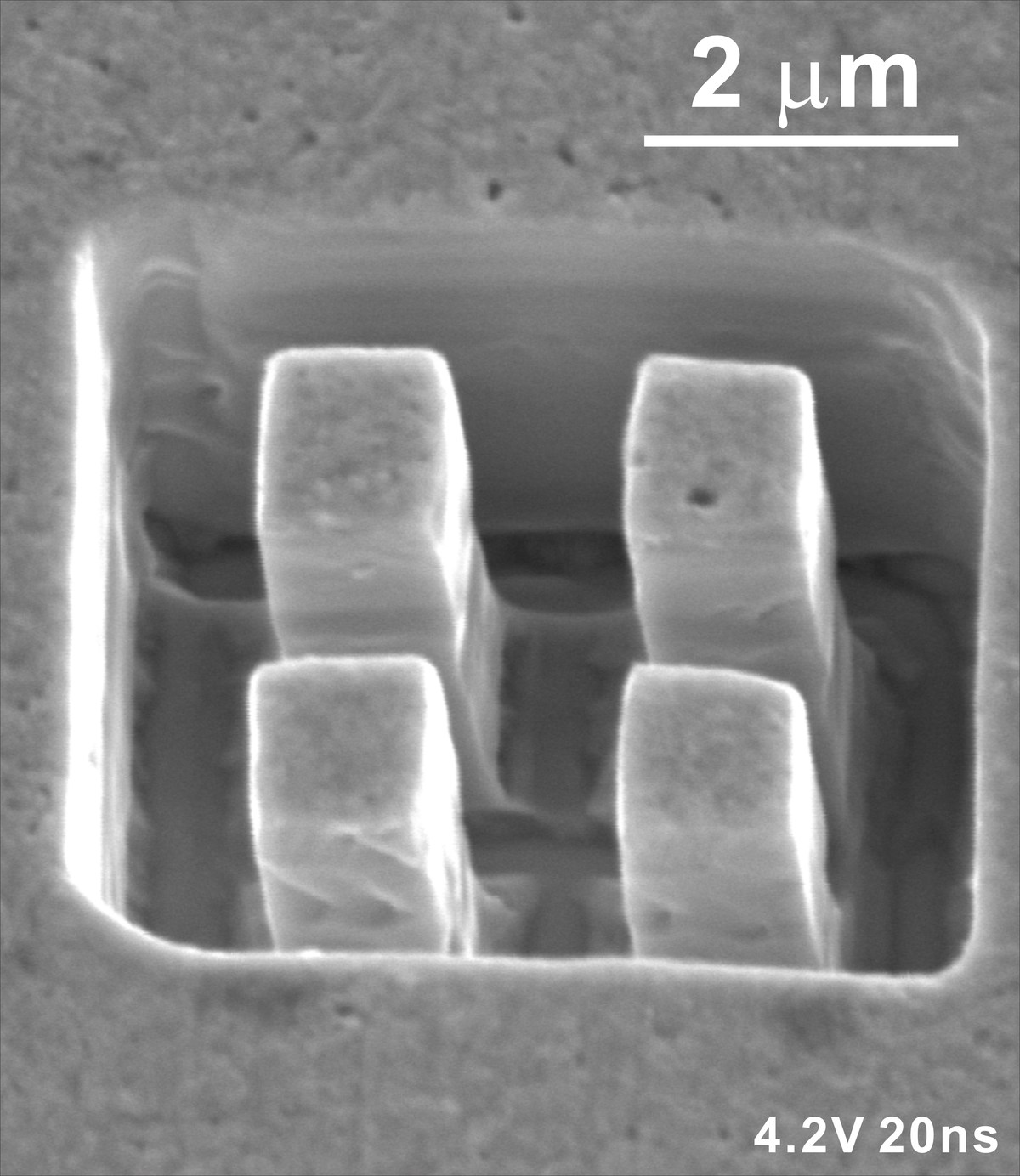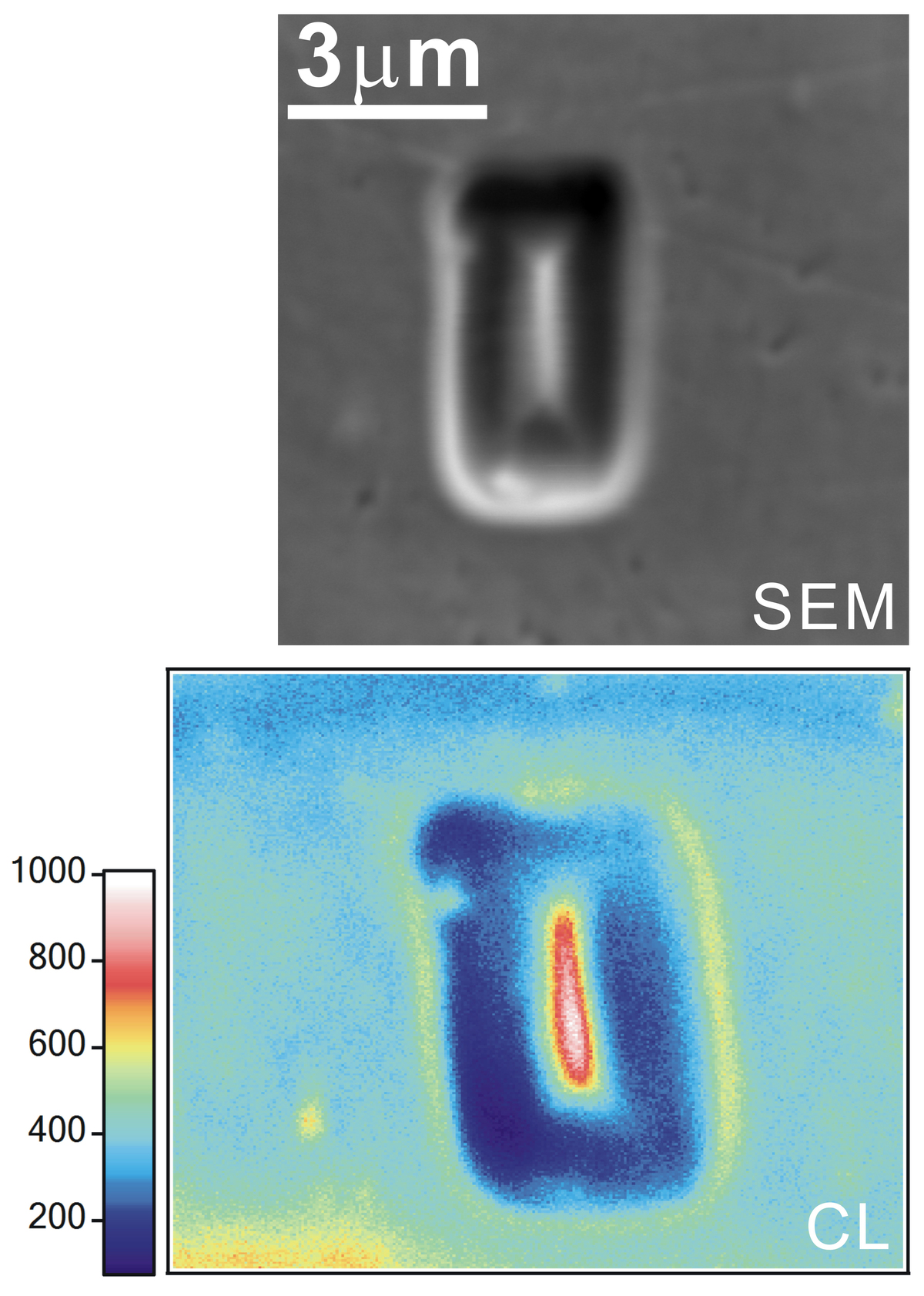C4.8: Fabrication and Optical Characterization of Metal Nanostructures
Subproject Leader: Rolf Schuster
Contributing Scientists:
Present: Xinzhou Ma
Past: Andreas Bán
Electromagnetic Field Enhancement at Metal Nanostructures
By excitation of localized surface plasmons the electromagnetic field can be strongly enhanced in the vicinity of metallic nanostructures. This 'focusing' effect can be used, e.g., in the near field of a metallic STM-tip for tip enhanced Raman spectroscopy or other sensitive spectroscopic methods. Subproject C4.8 aims (i) at the fabrication of three dimensional metallic nanostructures, e.g., of gold and (ii) on the characterization of their shape- and size-dependent optical properties.
Electrochemical Fabrication of Nanostructures
Three dimensional structures of submicrometer-dimensions are machined into Au-sheets by electrochemical microstructuring with ultrashort voltage pulses. Upon application of voltage pulses of only a few nanosecond duration to a tool electrode, the electrochemical double layer of the workpiece is only locally charged, by which metal dissolution can be confined with submicrometer precision [1,2]. Electrolytes, based on organic solvents (Dimethyl sulfoxide) are particularly suited for convenient, routine fabrication of small Au structures, which is due to their higher specific resistance in comparison with aqueous electrolytes [2].
Cathodoluminescence of Electrochemically Fabricated Gold Structures
There are two main contributions to cathodoluminescence upon irradiation of metals with keV electrons, i.e., transition radiation and radiative decay of excited surface plasmons [3]. Whereas transition radiation is the predominant contribution to cathodoluminescence on smooth gold surfaces, the deexcitation of surface plasmons occurs at sharp edges and rough surface parts. The enhanced emission of a few 100 nm wide ridge reflects the spatial distribution of localized surface plasmons on the ridge [4].
References
| [1] | R. Schuster, V. Kirchner, P. Allongue, and G. Ertl, Science 2000, 289, 98 |
| [2] | X. Ma, A. Bán, and R. Schuster, ChemPhysChem 2010, 11, 529 |
| [3] | M. Kuttge, E. J. R. Vesseur, A. F. Koenderink, H. J. Lezec, H. A. Atwater, Garciacute, F. J. a de Abajo, and A. Polman, Phys. Rev. B 2009, 79, 113405 |
| [4] | X. Ma and R. Schuster, J. Electroanal. Chem., In Press |
List of Publications 2006-2011 as PDF
Subproject Report 2006-2010 as PDF

